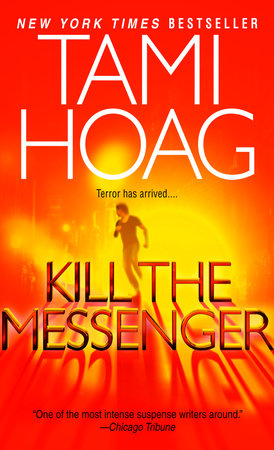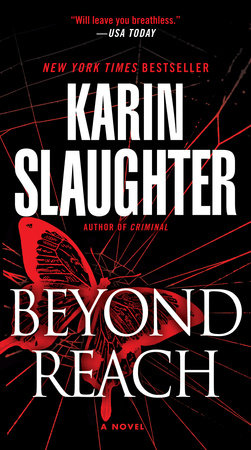Author Q&A
Kill the Messenger involves a bicycle messenger named Jace Damon who finds himself caught between the police and a shadowy group of killers. Your description at the beginning of the novel of the harrowing day of a bicycle messenger was breathtaking, and set the pace for the remainder of the book. Where did you learn about the types of mishaps a bicycle messenger faces in the course of an ordinary day?
Research, research, research. I was walking around in a bookstore one evening, thinking I should start on the research for Kill the Messenger. I turned a corner, and there in front of me was a book called The Immortal Class: Bike Messengers and the Cult of Human Power, by Travis Hugh Culley. Eerie, huh? More importantly, great book. Culley, himself a bike messenger, is also a fine writer. His book gave me a terrific insight into that particular world.
I also did a lot of research on the web, and I found out where the LA messengers hang out between runs. I went downtown and spent some time observing them in their natural habitat.
Who was your inspiration for Jace? What made you decide to make him a bicycle messenger?
The idea to write about a bike messenger came quite by chance. I was living in the middle of nowhere at the time, and had no knowledge of messengers at all. Like another character in Kill the Messenger, I have a habit of having televisions on all over my house so I won’t miss anything as I go from one room to another. Some news magazine was playing. I wasn’t paying much attention—until they announced a segment on Los Angeles bike messengers and the role they play in the criminal court system. That was the hook for me. I sat down and watched the piece, and knew I had a great premise for a thriller.
The character of Jace came and introduced himself to me entirely in my imagination. He isn’t based on anyone I know. I don’t feel like I constructed him. He was just there, this fascinating kid with a mysterious upbringing. I wanted to learn more about him.
A favorite aspect of Kill the Messenger was the relationship between Jace and his brother Tyler. A number of your books deal with sibling relationships. Why are sibling relationships so important to you?
I’ve always explored relationships in my work, all different kinds of relationships. I think my particular interest in sibling relationships comes from not having that kind of close relationship in my own life. I’m the youngest in my family by ten years, so for all intents and purposes I was an only child from age 8 on. I never had that in-house confidant, protector, and co-conspirator. In writing about those relationships, I get to have that relationship vicariously.
Jace works hard to create a sense of family for his brother in a world where they have none. At the same time, he has his own sense of loyalties to Eta and Madame Chen for what they have given him. Did you set out to give Jace strong women role models in his life, or did this evolve? Why have you chosen this over the seemingly more typical strong male role model?
Well, I try very hard never to do the typical, so there’s that. It wasn’t really a conscious decision to put those strong women in Jace’s life, but at the same time, I knew he had no male role models. I knew Jace had always been the man of his family, and that he’s taken his role very seriously. His mother had been his primary influence, trying hard to instill an interesting mix of street smarts and a moral center in him. And while Jace remains in part emotionally isolated after his mother’s death, and considers himself to be without family—aside from his brother—these other strong women in his life serve loosely as surrogate mothers.
We particularly enjoyed the edgy relationship in Kill the Messenger between L.A. Police Detective Kevin Parker and his rookie partner Renee Ruiz. Where did you draw the character of Ruiz from?
Ruiz was another of those characters who just showed up at the party. I didn’t know a thing about her until she walked on stage, so to speak. She was a total surprise, the Tami Hoag anti-heroine. She’s not like any other female cop I’ve ever written, and she’s certainly no one I would hang out with. Her personality is abrasive and chaotic, which serves her well in keeping Parker completely spun around.
You captured the tension between male and female law enforcement officers. While in many professions the war between the sexes has eased up, it is apparent that in law enforcement the old walls remain. Can you share what you think about this?
While women are much more accepted and much more prevalent in law enforcement than they were ten years ago, they’re still playing on the boys’ turf, and there will always be men who resent that. That’s not to say all male cops are Neanderthals. I know cops who have absolutely no problem working with women. And I know cops who do. Bottom line: people are people. Everyone comes to the party with their own particular set of baggage. It’s how they carry it that matters.
e were surprised to read your stat that L.A. only has 9,000 police officers for a city of 3.4 million compared to 38,000 police in New York City. This one statistic showed the urgency with which the officers need to get their cases closed. Were there other surprising things you found about the L.A. department as you did your research?
I was stunned to learn that statistic myself. Of course, New York City has twice the population. But half the NYPD’s force would be 19,000—still more than twice the number of officers in LA. Detectives carry heavy caseloads. The average murder can take only a few days of priority time before another case gets put on the board.
I was also shocked to learn how understaffed the scientific investigation division is. On TV every crime lab is straight out of CSI, with staff to spare and all the latest gizmos. In LA county there are three people who deal with DNA evidence. The lab is so backed up that often times the trial is over before results ever show up. And LA is not unusual in this. The reality of funding for law enforcement in this country is appalling.
Your descriptions of the Chinatown of L.A. were so well-done. We could see the fish markets and the trinkets being sold in this neighborhood. Can you share with us how you researched this material? And while you are at it, what would your favorite Chinese takeout order include?
I spent time in Chinatown, walking the streets early in the morning when the fish markets were coming to life, guys shoveling from huge piles of shaved ice, chickens squawking in the poultry markets. LA’s Chinatown is a wonderful mix of old and nouveau. Traditional Chinese herbalist shops next door to hip art galleries. The clack of mahjong tiles, jazz drifting out the windows of a club. Multi-generational Chinese families, and upwardly mobile hipsters snapping up loft space. As you can tell, I loved it.
My favorite Chinese takeout order? Won ton soup and Mongolian beef. My favorite meal on a cold rainy night.
We loved that Madame Chen drove a Mini. It’s a car with such a cool reputation, which is slightly incongruous to the way you portray her. Any particular reason you chose this model for her car?
I love Madame Chen, and I happen to think she’s a pretty cool lady, so a Mini suited her in a way. She’s a successful business woman, intelligent, always dressed to the nines, involved in the community, but she’s not stuffy or pretentious. She would have looked good in a Mercedes sedan, but the Mini set her apart as a bit of a non-conformist.
Are you planning on returning to any of the characters from your past novels in future books?
While I don’t have the temperament to write a series in the traditional book after book sense, I’m always open to returning to characters—if they have a story to tell. I won’t take characters and force a story on them, which is one of the pitfalls of being locked into a series.
I’m currently working on a new book with Kovac and Liska from Dust to Dust. They weren’t finished talking to me. And I know I will have Kev Parker in my ear until I find another story for him. I have a feeling I’ll be spending a lot of time with him, which is all right with me. An imaginary boyfriend is a lot less trouble than the real deal.
Of all the characters you have created, who, if any, is your favorite?
That’s a tough one! Like asking a mother which of her children she likes best. I can’t really pick a clear favorite. I still love Lucky Doucet from Lucky’s Lady, and Jack Boudreaux from Cry Wolf (My weakness for Cajun bad boys is well-documented, on and off the page) I have a special connection to Elena Estes from Dark Horse, and to Diane Nicholson in Kill the Messenger.
I have to say I’m currently very smitten with Kev Parker from Kill the Messenger. What I love about Parker is that he recognized his shortcomings at an important time in his life, and has worked very hard to become a better person. I admire that and find it an all-too rare a quality. I also love that hip, fun, wry, sensibility he has. As he says himself, he is the prince of metrosexual chic. He has a closet full of Armani, a medicine cabinet full of skin-care products, he can whip up a dinner for four with no frozen ingredients, pick a great wine, and he is decidedly and unabashedly heterosexual. If he were real, I’d marry him.
What are you working on now and when can readers expect to see it?
My current project is Prior Bad Acts. A judge’s life is threatened when she makes an unpopular ruling that sets a suspected multiple murderer free. Sam Kovac and Nikki Liska from Dust to Dust are assigned to the case—much to Kovac’s displeasure. An old friend of his was the detective who cracked the murder and built the case against the accused, and now he’s suspected of harassing the judge. I guarantee lots of twists and turns, and I guarantee the suspected murderer is not the only person in the judge’s life guilty of Prior Bad Acts. If all goes according to plan, readers should be expecting to see it sometime next year.






























